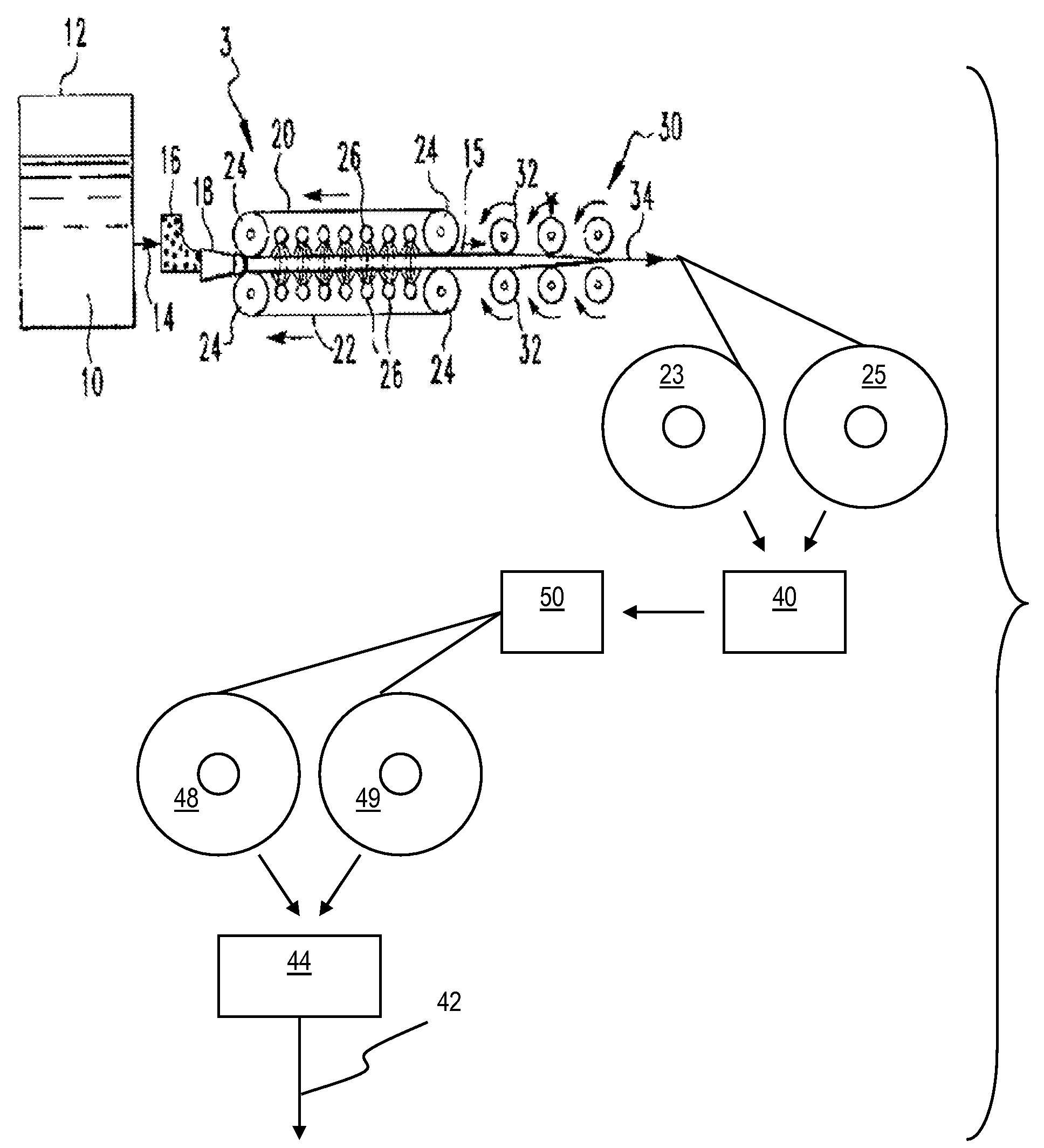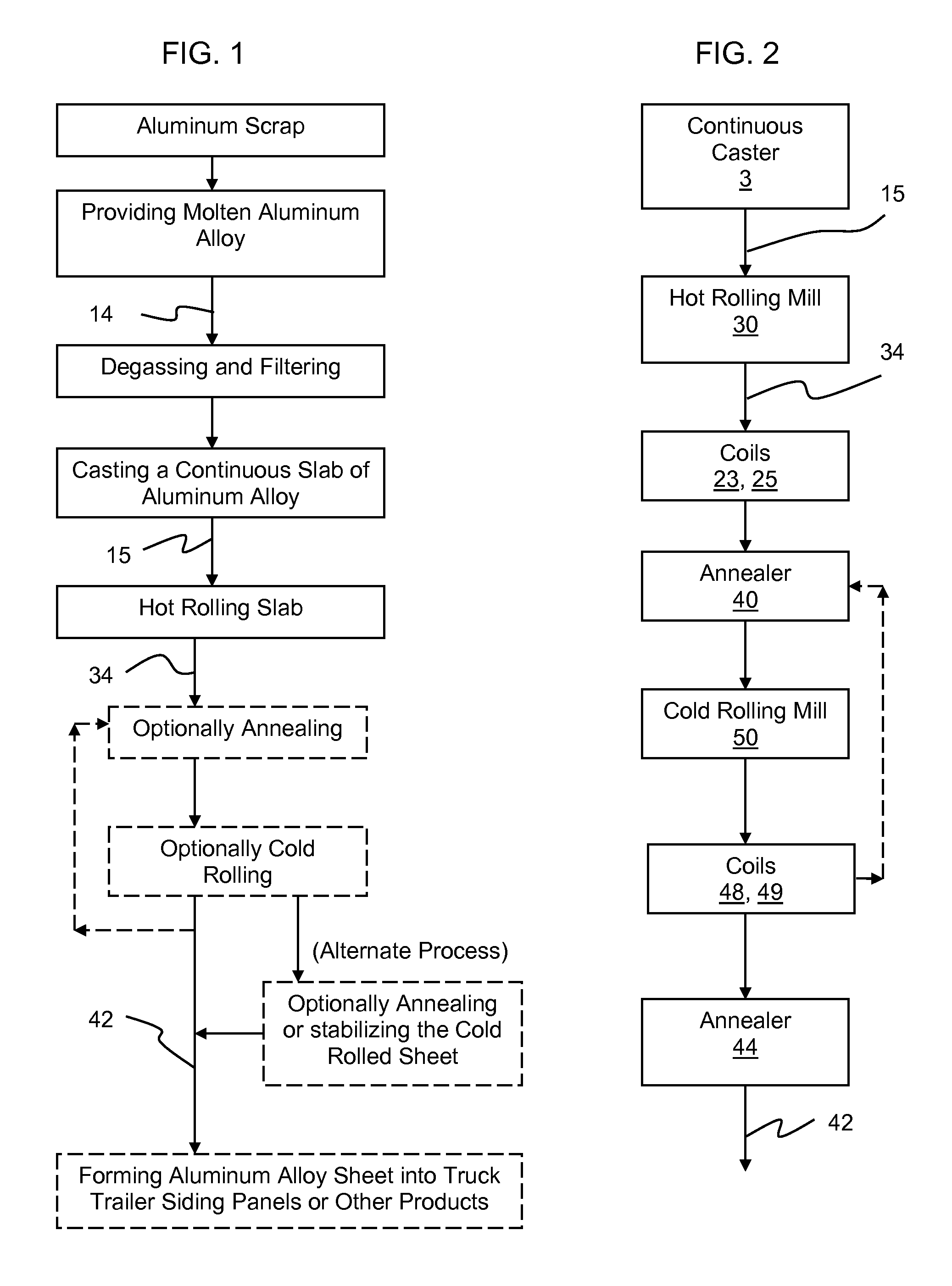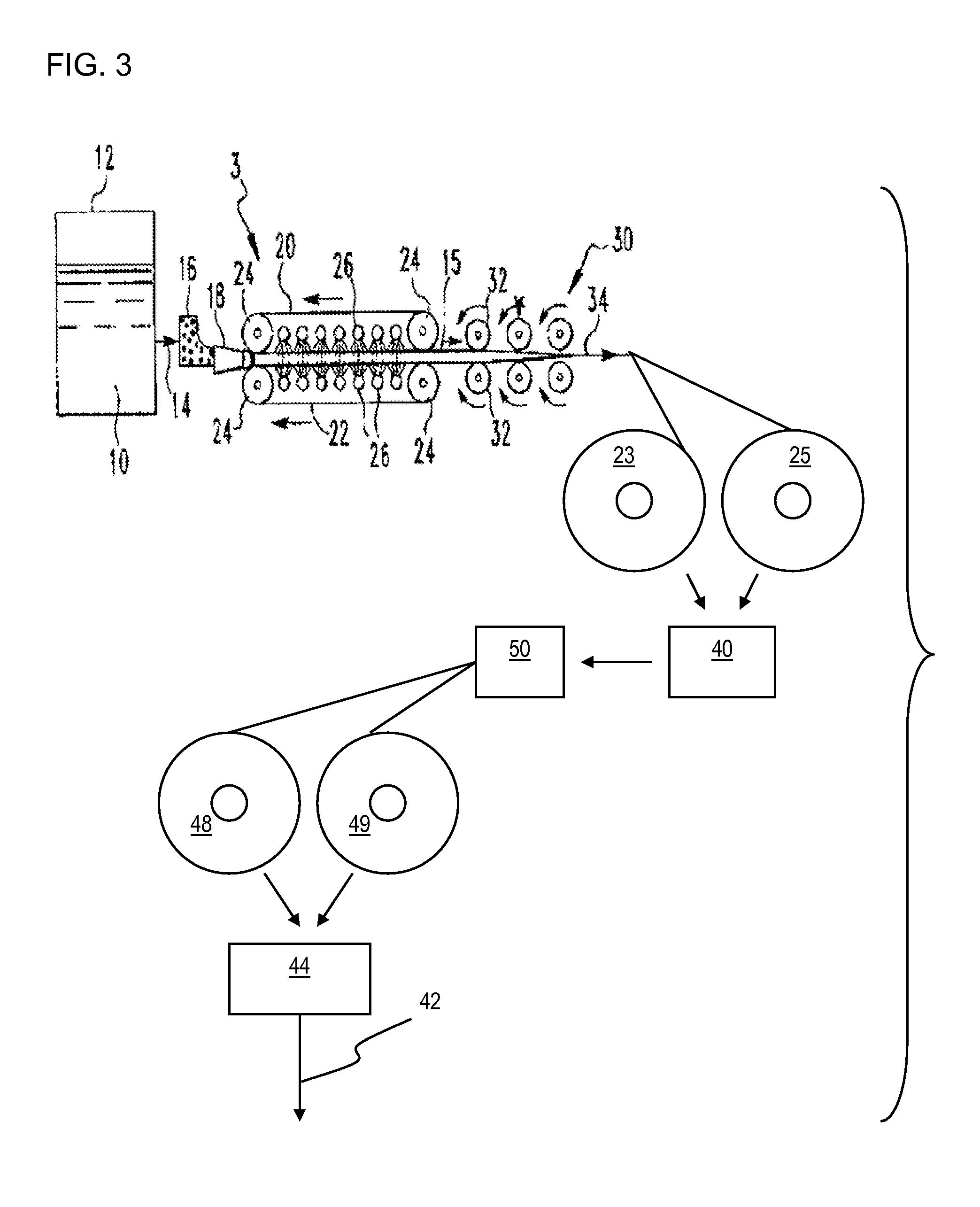Method for making high strength aluminum alloy sheet and products made by same
a technology of aluminum alloy and high strength, applied in the field of making high strength aluminum alloy sheets and products made by same, can solve the problems of unique processing constraints of continuous casting, fractures, and scrapping of formed parts, and achieve the effects of high strength, low cost and sufficient formability
- Summary
- Abstract
- Description
- Claims
- Application Information
AI Technical Summary
Benefits of technology
Problems solved by technology
Method used
Image
Examples
example 1
[0223]One example is for making truck trailer siding. An aluminum alloy with chemistry in the weight percentage of 0.229% Si, 0.467% Fe, 0.055% Cu, 0.626% Mn, 1.583% Mg, 0.040% Zn and 0.014% Cr was cast using a twin belt caster. The cast slab of 0.875 inches was directly fed into a three stand hot rolling mill with an entry temperature of 1,000 F. The material was hot rolled to 0.110 inches with a total plastic reduction of 87%. The total YTS increase from slab condition to the exit of the hot mill, independent of the number of the rolling stands, was about 222%. The 0.110 inches hot band was further cold rolled to 0.040 inches and annealed to an H291 temper with a yield strength of 39.5 ksi, an ultimate strength of 43.2 ksi and an elongation of 4.7%.
example 2
[0224]As a comparison to Example 1, currently used AA3004 alloy having the following composition 0.30% Si, 0.59% Fe, 0.16% Cu, 1.02% Mn, 0.91% Mg, 0.08% Zn, 0.02% Ti, 0.03% Cr, balance Al and inevitable impurities was tested. The AA3004 alloy was made into a 0.875 inch slab using a belt caster and hot rolled to 0.10 inch then cold rolled to 0.04 inch thickness and then annealed to H291 temper. The H291 temper material had a yield strength of 36.4 ksi and an ultimate strength of 40.3 ksi with an elongation of 4.0%. Yield strength of the invented alloy is 3.1 ksi (or 8.5%) higher than that of the currently used AA3004 alloy for the truck trailer siding application.
example 3
[0225]Another example is for making electrical conduits. An aluminum alloy with chemistry in the weight percentage of 0.233% Si, 0.567% Fe, 0.119% Cu, 0.614% Mn, 1.585% Mg, 0.064% Zn and 0.030% Cr was cast using a twin belt caster. The cast slab was directly fed into a three stand hot rolling mill and rolled from 0.875 inches to 0.055 inches with a total plastic deformation of 93.7%. The total YTS increase from slab condition to the exit of the hot mill, independent of the number of the rolling stands, was about 200%.
[0226]The 0.055 inches hot band was further cold rolled to 0.016 inches and then annealed to have a yield strength of 36.6 ksi, an ultimate strength of 41.3 ksi and an elongation of 9.5%. The material was formed into metal clad cable (similar to that of FIGS. 12 and 13) without forming failure. The formed metal clad cable was tested and pass the UL test standard UL 1569-Metal-Clad Cables (current revision through and including May 25, 2005).
PUM
| Property | Measurement | Unit |
|---|---|---|
| Temperature | aaaaa | aaaaa |
| Temperature | aaaaa | aaaaa |
| Temperature | aaaaa | aaaaa |
Abstract
Description
Claims
Application Information
 Login to View More
Login to View More - R&D
- Intellectual Property
- Life Sciences
- Materials
- Tech Scout
- Unparalleled Data Quality
- Higher Quality Content
- 60% Fewer Hallucinations
Browse by: Latest US Patents, China's latest patents, Technical Efficacy Thesaurus, Application Domain, Technology Topic, Popular Technical Reports.
© 2025 PatSnap. All rights reserved.Legal|Privacy policy|Modern Slavery Act Transparency Statement|Sitemap|About US| Contact US: help@patsnap.com



